Single-Cell Analyses Reveal Diverse Mechanisms of Resistance to EGFR Tyrosine Kinase Inhibitors in Lung Cancer
- PMID: 34247147
- PMCID: PMC8448980
- DOI: 10.1158/0008-5472.CAN-20-2811
Single-Cell Analyses Reveal Diverse Mechanisms of Resistance to EGFR Tyrosine Kinase Inhibitors in Lung Cancer
Abstract
Tumor heterogeneity underlies resistance to tyrosine kinase inhibitors (TKI) in lung cancers harboring EGFR mutations. Previous evidence suggested that subsets of preexisting resistant cells are selected by EGFR-TKI treatment, or alternatively, that diverse acquired resistance mechanisms emerge from drug-tolerant persister (DTP) cells. Many studies have used bulk tumor specimens or subcloned resistant cell lines to identify resistance mechanism. However, intratumoral heterogeneity can result in divergent responses to therapies, requiring additional approaches to reveal the complete spectrum of resistance mechanisms. Using EGFR-TKI-resistant cell models and clinical specimens, we performed single-cell RNA-seq and single-cell ATAC-seq analyses to define the transcriptional and epigenetic landscape of parental cells, DTPs, and tumor cells in a fully resistant state. In addition to AURKA, VIM, and AXL, which are all known to induce EGFR-TKI resistance, CD74 was identified as a novel gene that plays a critical role in the drug-tolerant state. In vitro and in vivo experiments demonstrated that CD74 upregulation confers resistance to the EGFR-TKI osimertinib and blocks apoptosis, enabling tumor regrowth. Overall, this study provides new insight into the mechanisms underlying resistance to EGFR-TKIs. SIGNIFICANCE: Single-cell analyses identify diverse mechanisms of resistance as well as the state of tolerant cells that give rise to resistance to EGFR tyrosine kinase inhibitors.
©2021 American Association for Cancer Research.
Figures
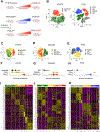
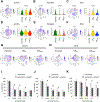
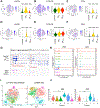
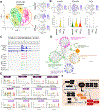

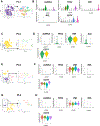
References
-
- Citri A, Yarden Y. EGF-ERBB signalling: towards the systems level. Nature reviews Molecular cell biology 2006;7:505–16 - PubMed
-
- Kobayashi S, Boggon TJ, Dayaram T, Janne PA, Kocher O, Meyerson M, et al.EGFR mutation and resistance of non-small-cell lung cancer to gefitinib. The New England journal of medicine 2005;352:786–92 - PubMed
Publication types
MeSH terms
Substances
Grants and funding
LinkOut - more resources
Full Text Sources
Research Materials
Miscellaneous

